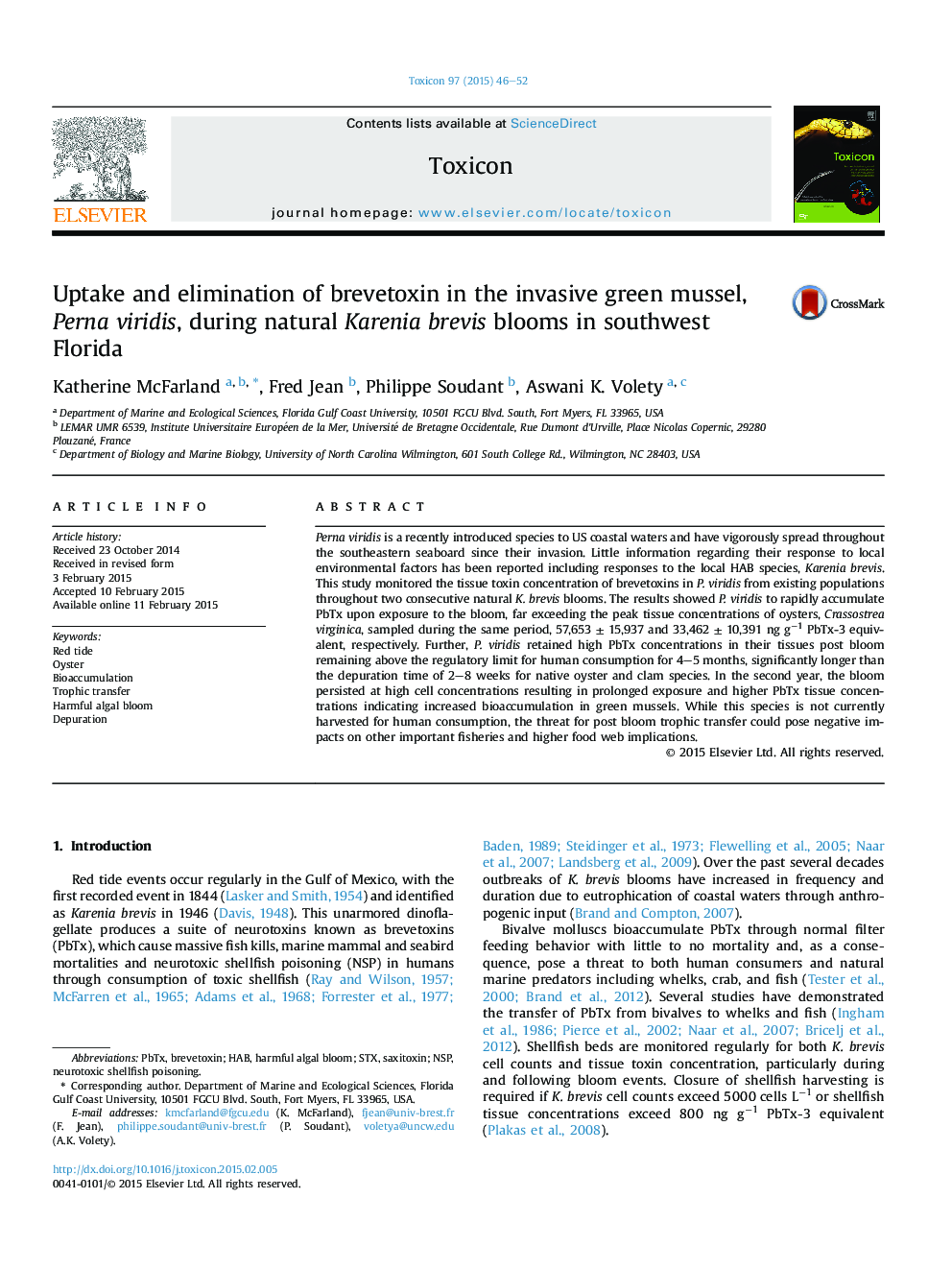| Article ID | Journal | Published Year | Pages | File Type |
|---|---|---|---|---|
| 2064595 | Toxicon | 2015 | 7 Pages |
•Accumulation and elimination of PbTxs in Perna viridis during red tide blooms were measured.•P. viridis showed high accumulated toxin concentrations compared to native oysters.•Slow depuration rates of 4–5 months raises concern for trophic transfer post bloom.
Perna viridis is a recently introduced species to US coastal waters and have vigorously spread throughout the southeastern seaboard since their invasion. Little information regarding their response to local environmental factors has been reported including responses to the local HAB species, Karenia brevis. This study monitored the tissue toxin concentration of brevetoxins in P. viridis from existing populations throughout two consecutive natural K. brevis blooms. The results showed P. viridis to rapidly accumulate PbTx upon exposure to the bloom, far exceeding the peak tissue concentrations of oysters, Crassostrea virginica, sampled during the same period, 57,653 ± 15,937 and 33,462 ± 10,391 ng g−1 PbTx-3 equivalent, respectively. Further, P. viridis retained high PbTx concentrations in their tissues post bloom remaining above the regulatory limit for human consumption for 4–5 months, significantly longer than the depuration time of 2–8 weeks for native oyster and clam species. In the second year, the bloom persisted at high cell concentrations resulting in prolonged exposure and higher PbTx tissue concentrations indicating increased bioaccumulation in green mussels. While this species is not currently harvested for human consumption, the threat for post bloom trophic transfer could pose negative impacts on other important fisheries and higher food web implications.
